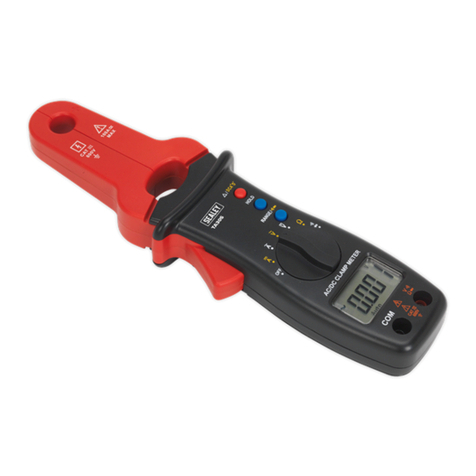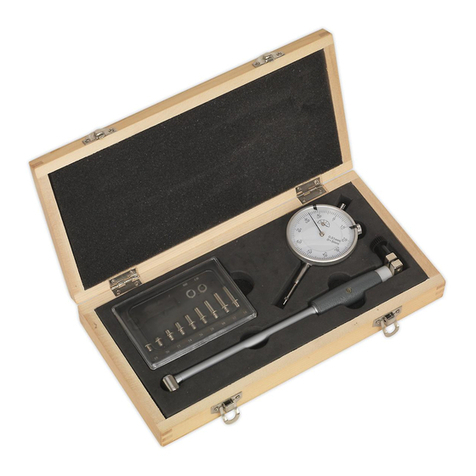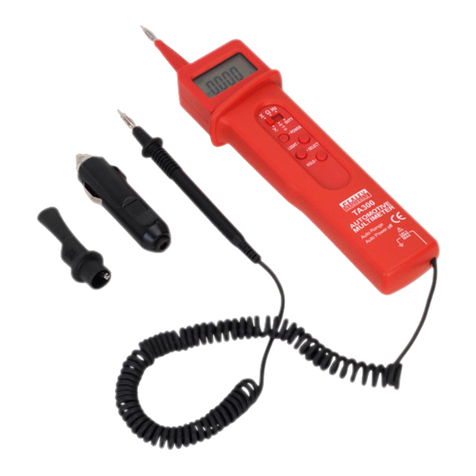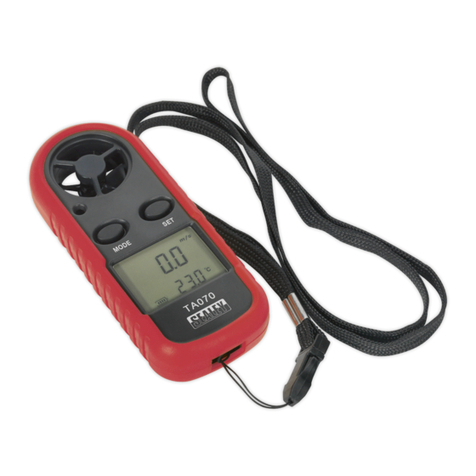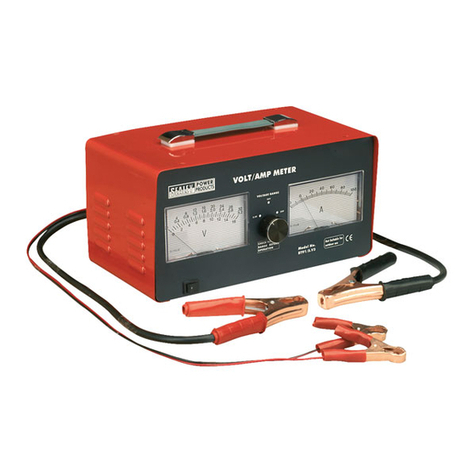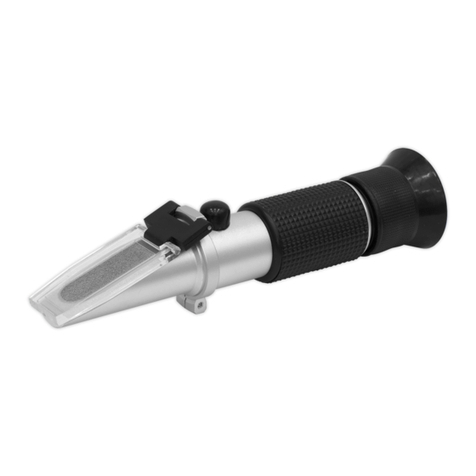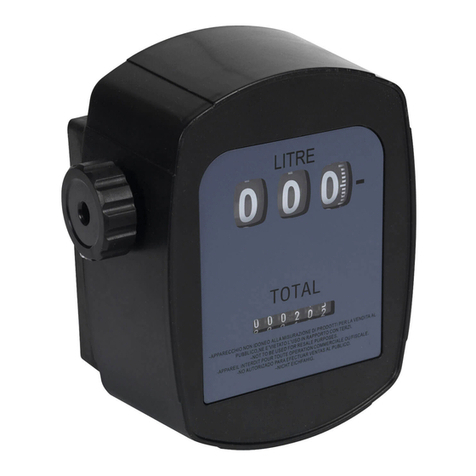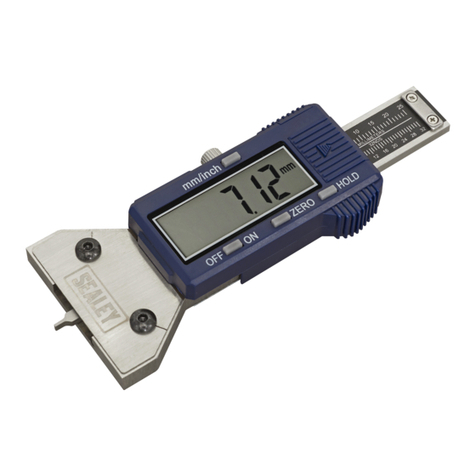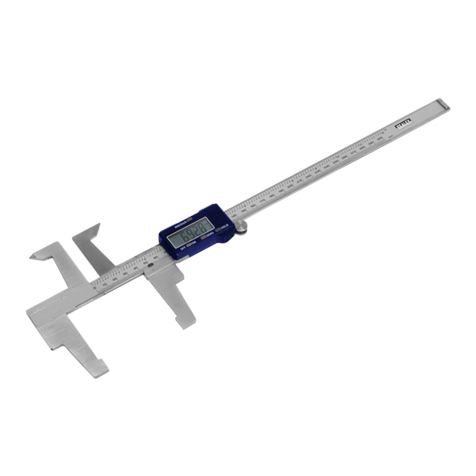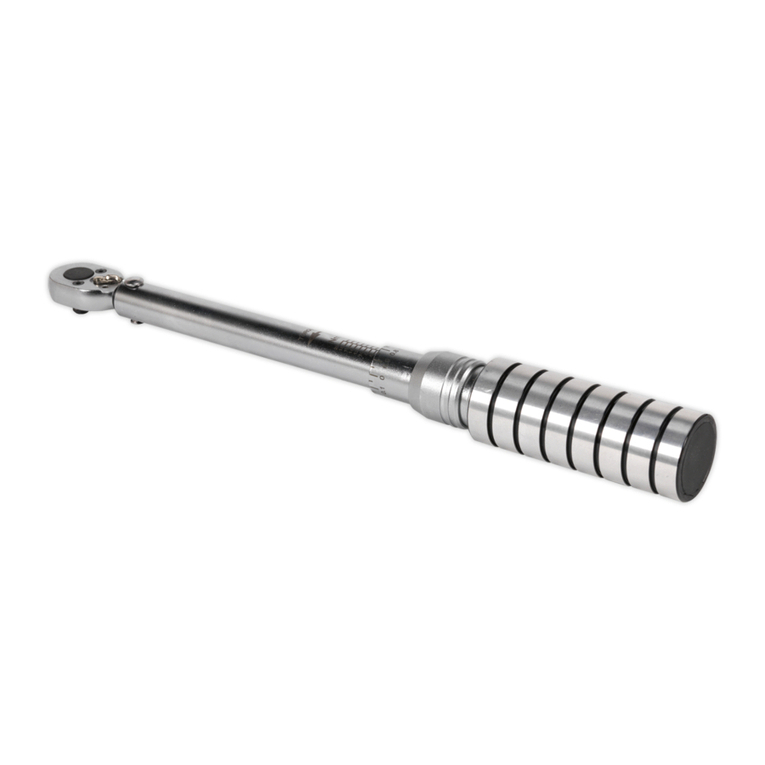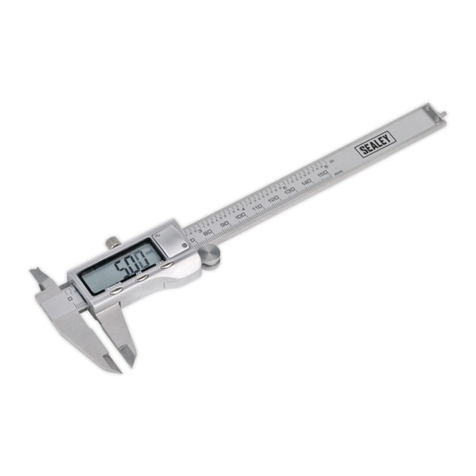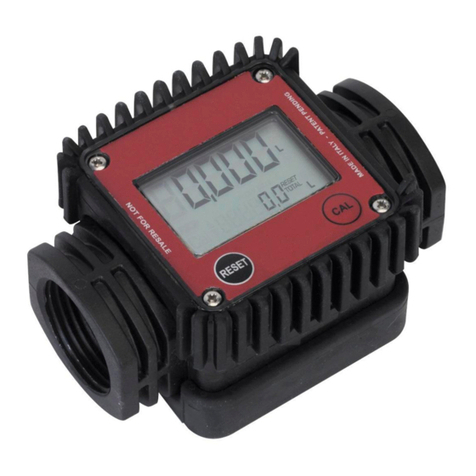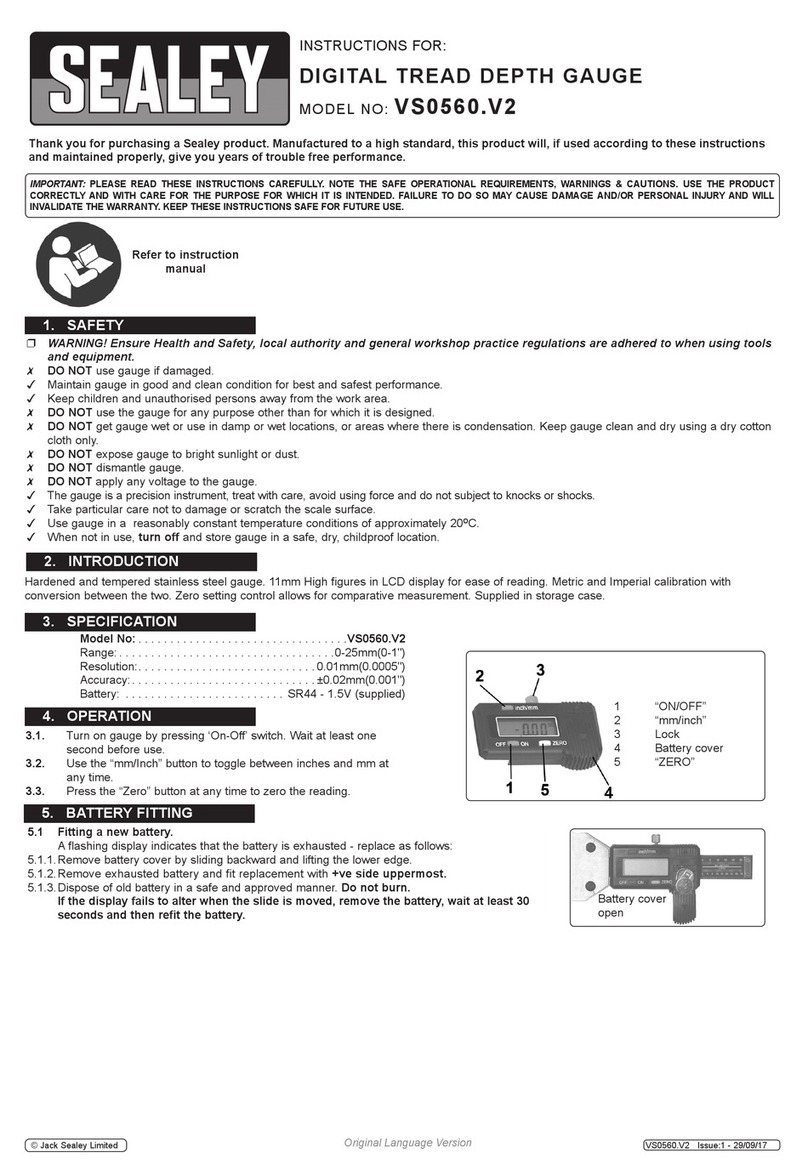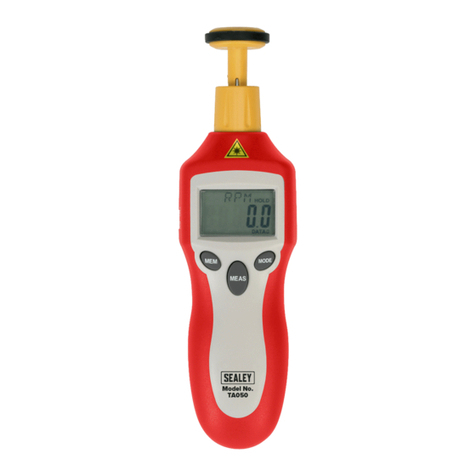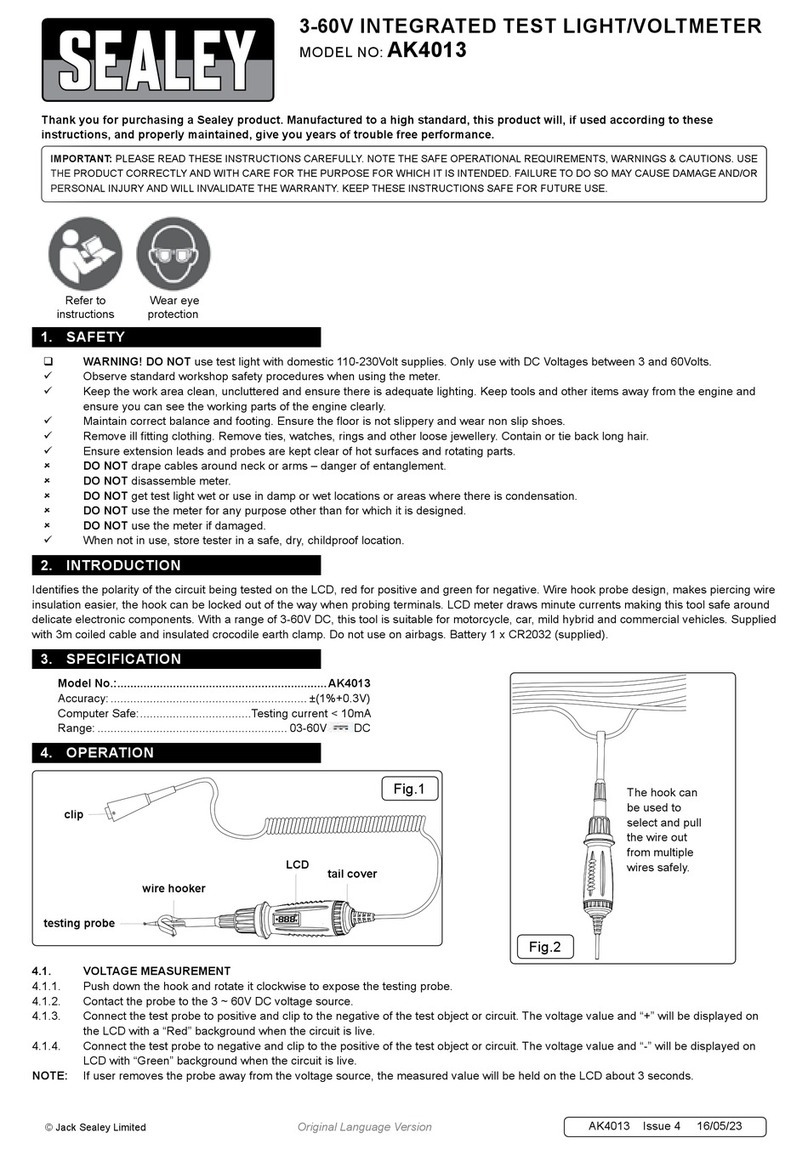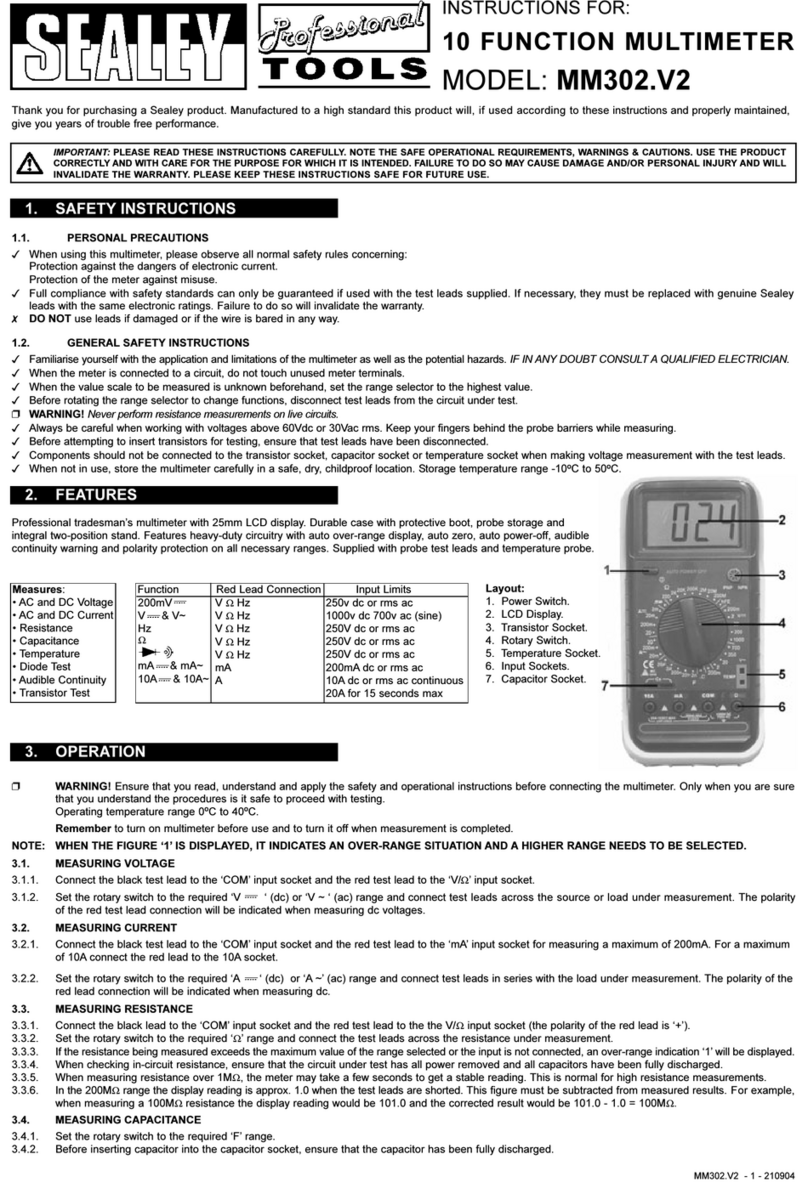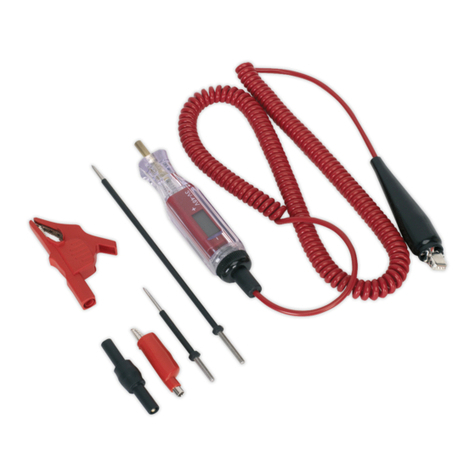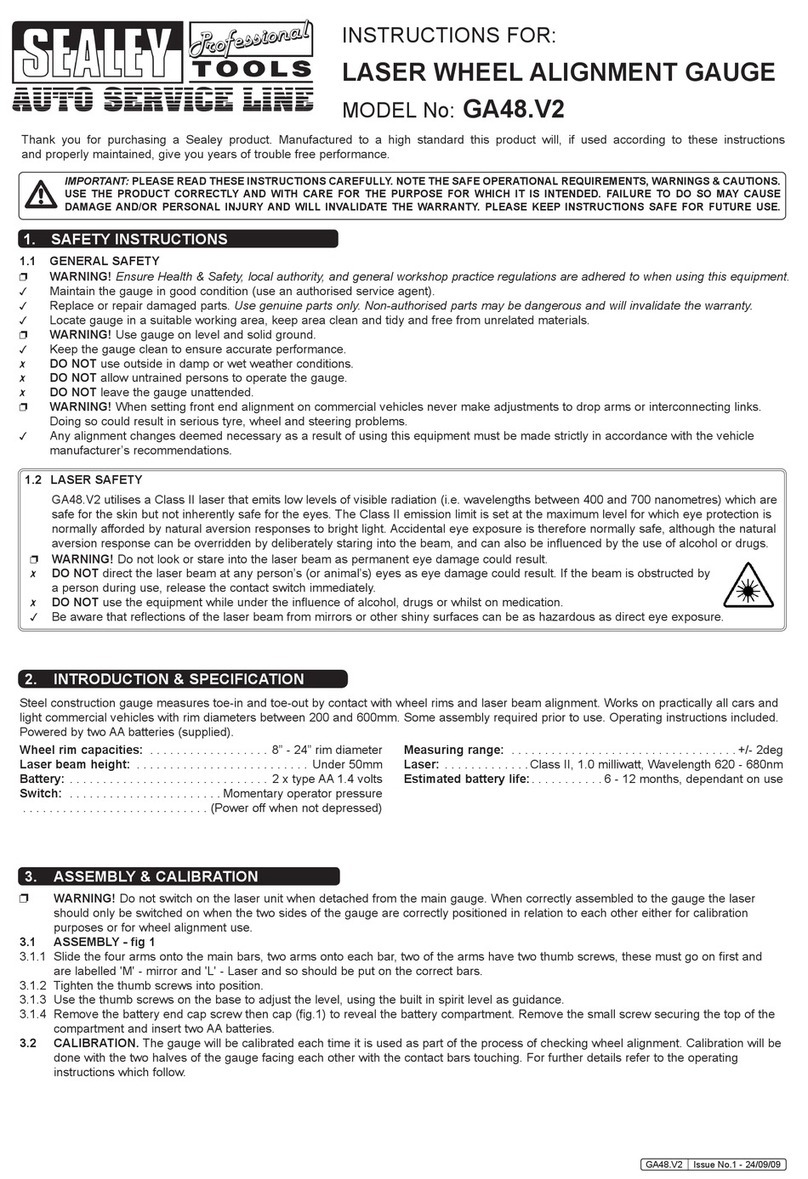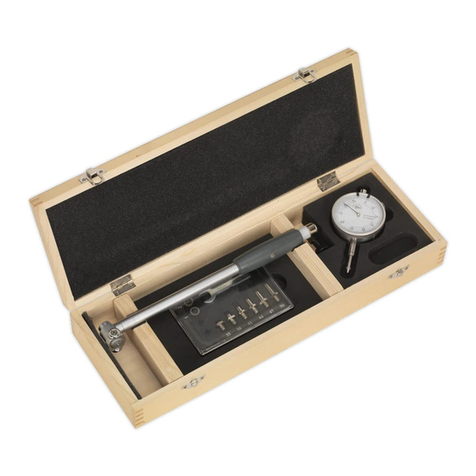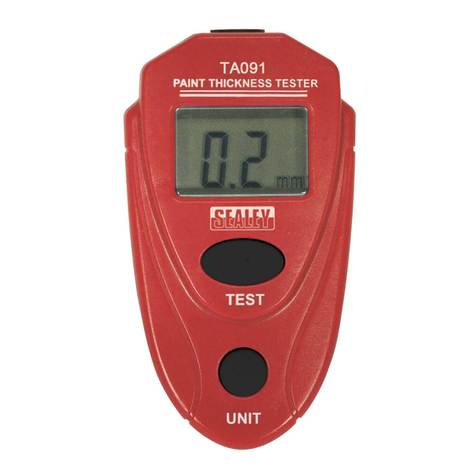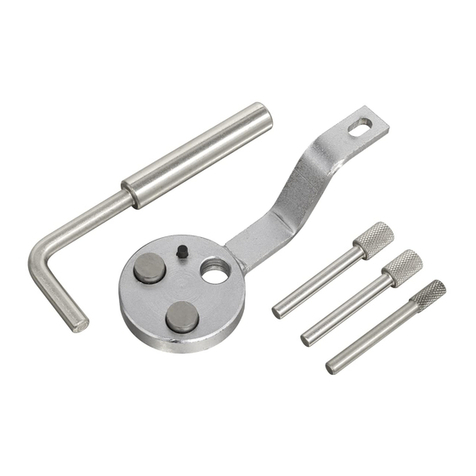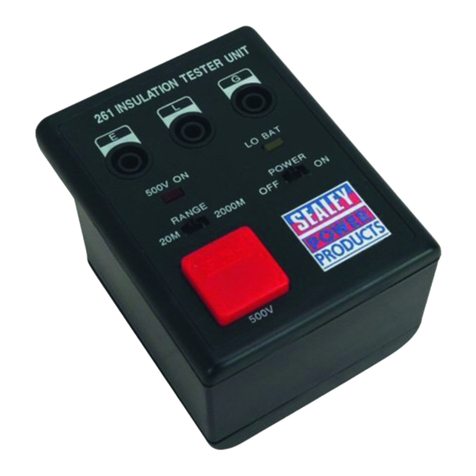4.4. Diode Measurement
4.4.1. Insert the black test lead into the negative COM socket and the red test lead into the positive VΩRPM socket.
4.4.2. Turn the function dial to the Ω position, press the function selection button until is shown to the left side of the display.
4.4.3. Connect the red test lead to the anode of the diode, and the black test lead to the cathode of the diode.
4.4.4. The approximate forward voltage drop of the diode will be displayed. If the connection is reversed, “OL” will be displayed.
4.5. Duty Cycle Measurement
4.5.1. Insert the black test lead into the negative COM socket and the red test lead into the positive VΩRPM socket.
4.5.2. Turn the function dial to the DUTY% position.
4.5.3. Connect the test leads to the circuit to be tested and read the value on the display.
4.6. Resistance Measurement
4.6.1. Insert the black test lead into the negative COM socket and the red test lead into the positive VΩRPM socket.
4.6.2. Turn the function dial to the Ωposition, press the function selection button until M and Ωare shown in the top right hand corner of the display.
4.6.3. Connect the test leads to the load to be tested and read the value on the display.
4.7. Audible Continuity Test
4.7.1. Insert the black test lead into the negative COM socket and the red test lead into the positive VΩRPM socket.
4.7.2. Turn the function dial to the Ω position, press the function selection button until and Ωare shown in the display.
4.7.3. Connect the test leads to the two terminals of the circuit to be tested.
4.7.4. If the resistance is less than 50Ω, then an audible warning will be given.
4.8. Frequency Measurement
4.8.1. Insert the black test lead into the negative COM socket and the red test lead into the positive VΩRPM socket.
4.8.2. Turn the function dial to the desired Hz position.
4.8.3. Connect the test leads to the source or load to be measured and read the value on the display.
4.9. Temperature Measurement
4.9.1. Insert the thermocouple’s plug into the negative COM socket and the positive VΩRPM socket ensuring that the correct polarity on the plug is observed.
4.9.2. Turn the function dial to the °C or °F position as desired.
4.9.3. Place the thermocouple on the item to be measured and read the temperature on the display.
4.10. RPM (Tachometer) Measurement
4.10.1. Insert the black test lead into the negative COM socket and the red test lead into the positive VΩRPM socket.
4.10.2. Turn the function dial to the desired RPM position.
4.10.3. If the vehicle uses a DIS ignition system with no distributor, connect the red test lead to the TACH (tachometer) signal line (which is connected to the
computer DIS module of the engine). If the vehicle uses an ignition system with a distributor, connect the red test lead to the primary negative end of the
ignition coil. Connect the black test lead to an earthing point, or the negative terminal of the vehicle battery.
Note: Refer to the vehicle manufacturer’s manual for the specific location and more details.
4.10.4. Start the engine and read the figure on display. Divide this by the number of cylinders (2 stroke) or half the number of cylinders (4 stroke) and the
resulting figure is the RPM.
4.11. Dwell Angle Measurement
4.11.1. Insert the black test lead into the negative COM socket and the red test lead into the positive VΩRPM socket.
4.11.2. Turn the function dial to the desired position that corresponds with the correct number of cylinders for the engine being tested.
4.11.3. If the vehicle uses a DIS ignition system with no distributor, connect the red test lead to the TACH (tachometer) signal line (which is connected to the
computer DIS module of the engine). If the vehicle uses an ignition system with a distributor, connect the red test lead to the primary negative end of the
ignition coil. Connect the black test lead to an earthing point, or the negative terminal of the vehicle battery.
Note: Refer to the vehicle manufacturer’s manual for the specific location and more details.
4.11.4. Start the engine and the dwell angle will be shown on the display.
Note: Refer to vehicle manufacturer’s manual for detailed procedures for dwell angle settings and adjustments.
4.12. Replacing The Battery
WARNING! To avoid electric shock, disconnect the test leads from any source of voltage and from the analyser before removing the rear cover.
4.12.1. When the battery drops below the operating voltage, the symbol will appear in the display. Replace the battery.
4.12.2. Remove the analyser from its protective case.
4.12.3. Loosen and remove the three screws using a Phillips screwdriver, then remove the rear cover from the analyser.
4.12.4. Remove the old battery (PP3) and insert a new one, observing the correct polarity.
4.12.5. Replace the rear cover and secure with the three screws.
WARNING! To avoid electric shock, DO NOT operate the meter until the it has been fully re-assembled.
4.13. Replacing The Fuses
WARNING! To avoid electric shock, disconnect the test leads from any source of voltage and from the analyser before removing the fuses.
4.13.1. Remove the analyser from its protective case.
4.13.2. Loosen and remove the three screws using a Phillips screwdriver, then remove the rear cover from the analyser.
4.13.3. Remove the circuit board by holding it on the left and right sides and gently but firmly lifting it away from the front cover and remove the board to
gain access to the fuse holders. Do not turn the function dial whilst the circuit board is removed and keep front cover face down to avoid losing any
small parts.
4.13.4. Remove the appropriate old fuse from its holder by gently pulling it out.
4.13.5. Install the new fuse into its holder. Note: Always use a fuse of the correct size and value, either 10A/250V or 0.5A/250V.
4.13.6. Replace the rear cover and secure with the three screws.
WARNING! To avoid electric shock, DO NOT operate the meter until it has been fully re-assembled.
Original Language Version TA101 Issue No.2 - 19/12/11
5. MAINTENANCE
WARNING! DO NOT attempt to repair or service the analyser unless qualified to do so and have the relevant calibration, performance test,
and service information to hand. To avoid electrical shock or damage to the analyser DO NOT get water inside the case.
5.1. Periodically wipe the case with a damp cloth and mild detergent. Do not use solvents.
5.2. Turn the analyser off when not in use and remove the battery if stored for a long period of time.
5.3. Do not store the analyser in a place of high humidity or high temperature
6. PARTS LIST
Item Description Parts
1 TA101.01 TEST LEADS
2 TA101.02 9V BATTERY
3 TA201.01 THERMOCOUPLE ‘K’ TYPE
